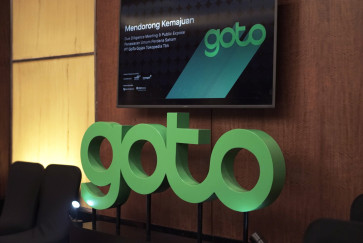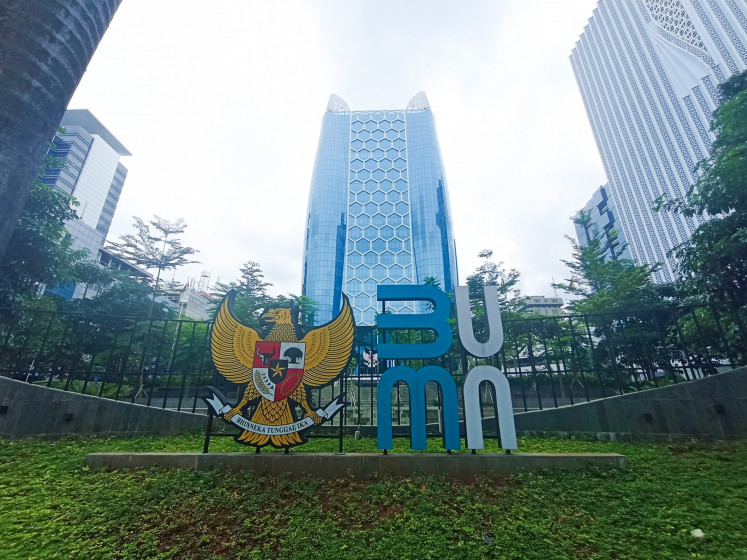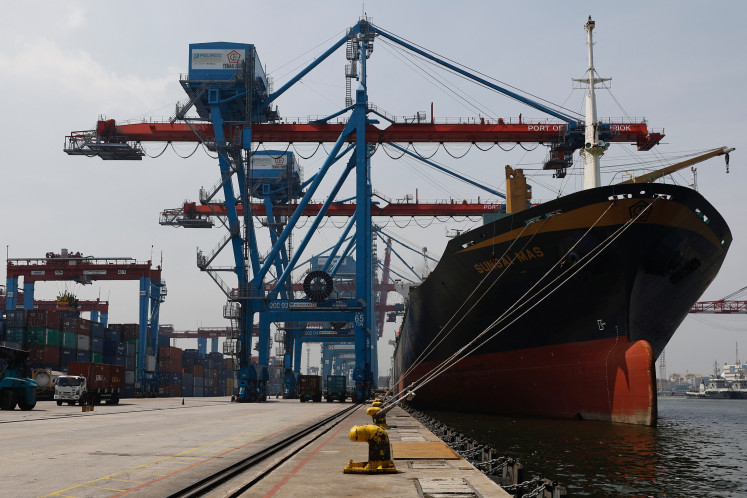California lessons for Indonesia's innovators
Indonesia tech entrepreneurs, take note
Change text size
Gift Premium Articles
to Anyone

I
ndonesia tech entrepreneurs, take note. During our recent Milken Institute Asia Summit held in Singapore, we shared several lessons from the US state of California that not just Indonesia but all ASEAN member states can build on if more of the region is to become drivers of global invention and innovation.
President Joko 'Jokowi' Widodo, who this October became the first Indonesian president to visit the US in a decade, canceled the West Coast leg of his trip to deal with Indonesia's haze crisis. He also has since canceled his attendance at the APEC Forum in Manila.
But one need not meet Obama in Manila, or travel to California to know that that America's 'Golden state' has been long associated with the rewards of risk taking for decades. Numerous west coast backyard entrepreneurs have been transformed into boardroom successes. Those California dreams of tech success have since gone global, capturing the imaginations of would-be tech entrepreneurs everywhere, whether in Jakarta, Surabaya or Silicon Valley.
The recent rapid growth of investment in Asia's tech sector, which according to Tech in Asia has risen from US$6 billion to $45 billion in two years, provide a real opportunity. But the key for Indonesia and all of ASEAN is not just a rash of investment in initial public offerings and hot tech stocks, but for policymakers to foster an entrepreneurial ecosystem to create consistent levels of innovation.
Long-term success in tech typically includes the ability to not only improve on, but also to be the center of innovation. As increasing global competition and higher costs have brought several Asian countries into increased prominence in technology manufacturing, there is a strong desire by these nations also to take steps to nurture and boost their own home-grown innovations, risk-takers and successes.
So what lessons does California offer up to Indonesia particularly as the ASEAN Economic Community comes into being?
First, Indonesia must commit to developing great research universities ' world-class institutes that will both train skilled individuals and advance the sharing of basic research and technology. According to the Shanghai Academic Ranking of World Universities, 2015, the US is home to 16 of the top 20 world research universities.
Of those 16, an astonishing six are in California, ranging from Stanford University at No. 2, to the University of California, San Francisco, at No. 18. Three of the top seven are in the San Francisco area, two from around Los Angeles, and one in San Diego. Of the top 100 research universities, 11 are in California.
In contrast, Asia's highest-ranking research university is the University of Tokyo at No. 21; no non-Japanese university in Asia makes the top 100.
This situation is changing, and California-based universities know that they too cannot rest on their laurels. In the interim, in their desire for international students, US institutions also have educated some of the most successful entrepreneurs in Asia.
____________________________________________
Indonesia must embrace failure ' not as an end, but as a means to success.
Second, Indonesia must embrace failure ' not as an end, but as a means to success. Perhaps one of the most important lessons and strengths of California is the ability of its entrepreneurs to fail and try again. By some accounts, two-thirds of Silicon Valley startups do not last five years, failing ever to make it to an Initial Public Offering (IPO) stage.
So, why do there continue to be so many startups? One reason is that, quite often, the same people who started one company are willing and able to try again. The ability to fail and learn is a significant factor in many companies' successes in the state.
Even the more established firms, including Apple, Google and Intel among others, have thrived in part by continuing to take chances on small innovators, who then made it big. At one point, Yahoo's single greatest windfall arguably came from its stake in China's e-commerce leader, Alibaba, and its second greatest, perhaps its joint venture in Japan.
Third, Indonesia must move to innovate in the financing of start-ups. Risk taking cannot be left to entrepreneurs alone. By some accounts, up to 50 percent of all venture capital activity in the world flows through California. The access to significant investors at numerous different stages plays a significant role for California's success in seeding tech innovation. Indonesia must take further steps to develop this resource, including policy and regulatory changes.
Indonesia's family entrepreneurs are a great asset, including across Southeast Asia. But a key to growth will be recognizing that while venture capital funds do involve personal relationships, they also involve assessing and taking risks with relative strangers.
This is a marked contrast to basing investment decisions primarily on the long-standing family relationships that often work in Asia. This distinction is important.
The tech sector remains a US success story that has gone well beyond any Silicon Valley roots. In recent years, we have seen how technology companies have moved south from Silicon Valley to our own Santa Monica neighbor ' now nicknamed Silicon Beach. That same reinvention and expansion of America's tech industry now has people rightly California dreaming all around Asia and the Pacific, including understandably in Indonesia.
______________________________
Curtis S. Chin, a former US Ambassador to the Asian Development Bank, is an Asia fellow of the Milken Institute and managing director of advisory firm RiverPeak Group, LLC. Kevin Klowden is managing director of the Milken Institute's California Center and a managing economist at the Institute. The views expressed are their own.









